Museum Island (Museumsinsel) is an island located on the Isar River in the center of Munich, in the districts: Ludwigsvorstadt-Isarvorstadt - the southern part of the island and Au-Haidhausen - the northern part.
The island was formed naturally during the middle Ages.
Since the middle ages the island served as a site for unloading and storage of wood and coal supplied with rafts. Because of this use of the island was called "Coal island" (Kohleninsel / Coloniser).
Until 1772 on the island there were no buildings, since the construction of the dam Sylvenstein (earthfill dam in the ISAR valley, in the Alpine part of Upper Bavaria) it was regularly flooded.
In 1772 on the island were built the barracks of the ISAR, and after the flood in 1899 the buildings were rebuilt with flood protection.
In 1903 the city Council announced that grant the island to the recently formed Deutsches Museum. The construction of the new Museum building on the island began in 1906, and the island was renamed "Museum island".
Today the Museum island is one of the two strengthened and built up the river Islands on the ISAR in Munich. Second - the Prater island (Praterinsel).
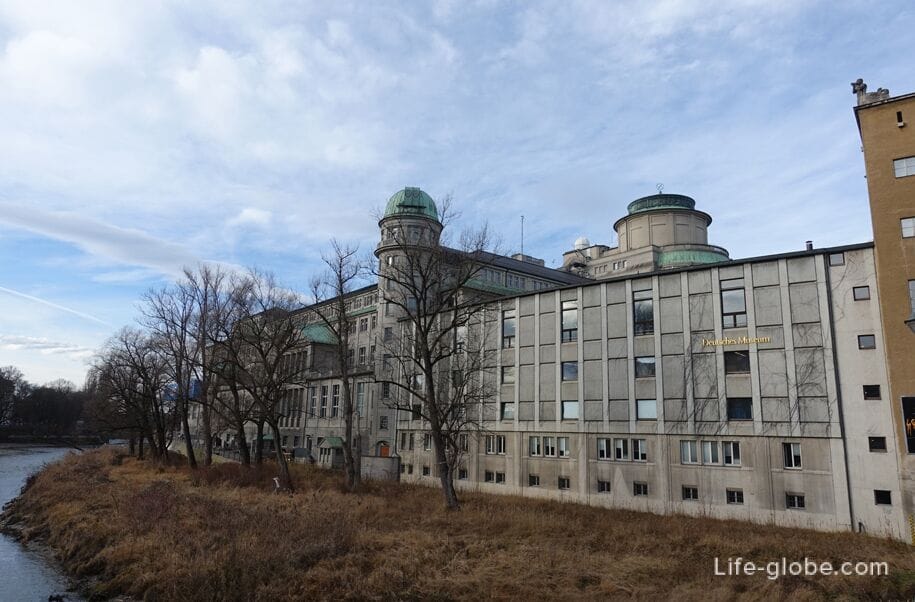
The Museum island has a length of 863 metres, a width of up to 197 metres and covers an area of 8.6 hectares.
The island consists of two parts, separated by the bridge of Ludwig:
- South and a large part of the Museum island is one of the most popular and visited places in Munich, because there is a German Museum of masterpieces of science and technology (Deutsches Museum) is the largest and most important in the world scientific-technical Museum, which presented more than 30 exhibits from 50 fields of science and engineering, from astrophysics to cell biology. Read more about German Museum.
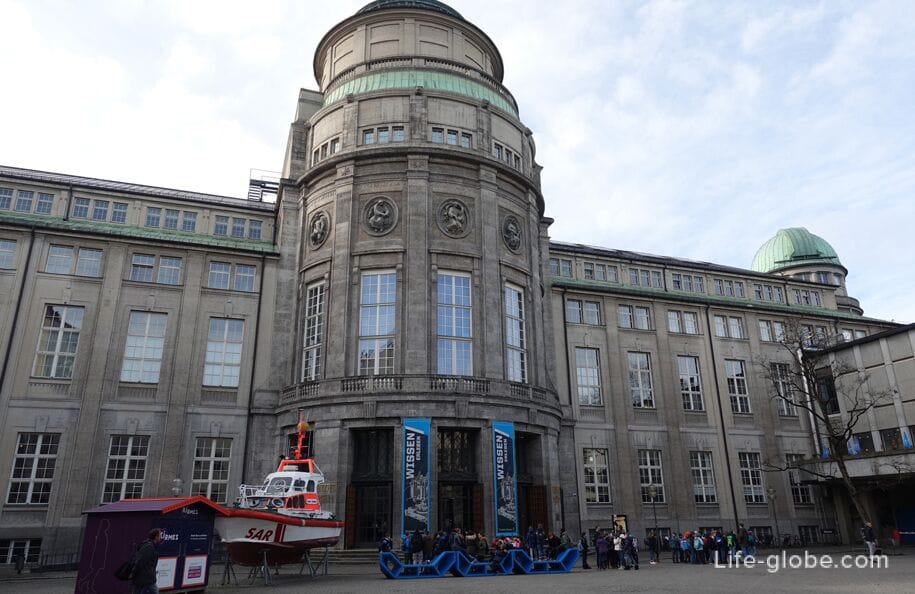
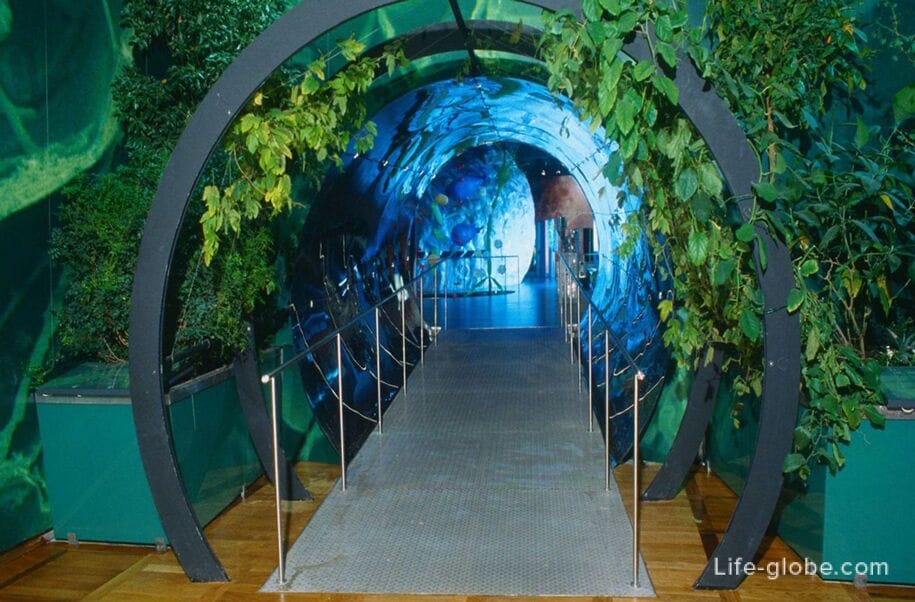
- the Northern and smaller part of the island is currently a small Park with the fountain of Father Rhine (Vater-Rhein-Brunnen / Vater-Rhein-Brunnen), which is decorated with a sculpture of the God of the river Rhine.
The fountain was created by the Munich sculptor Adolf von Hildebrand between 1897 and 1903 years for the city of Strasbourg, where the fountain was located on the square were Brogli.
During the French invasion of Strasbourg in 1918, the fountain was destroyed, survived only a part of the sculpture. Later, the bronze sculpture was purchased back in Munich and in 1932 installed on the fountain in its current location.
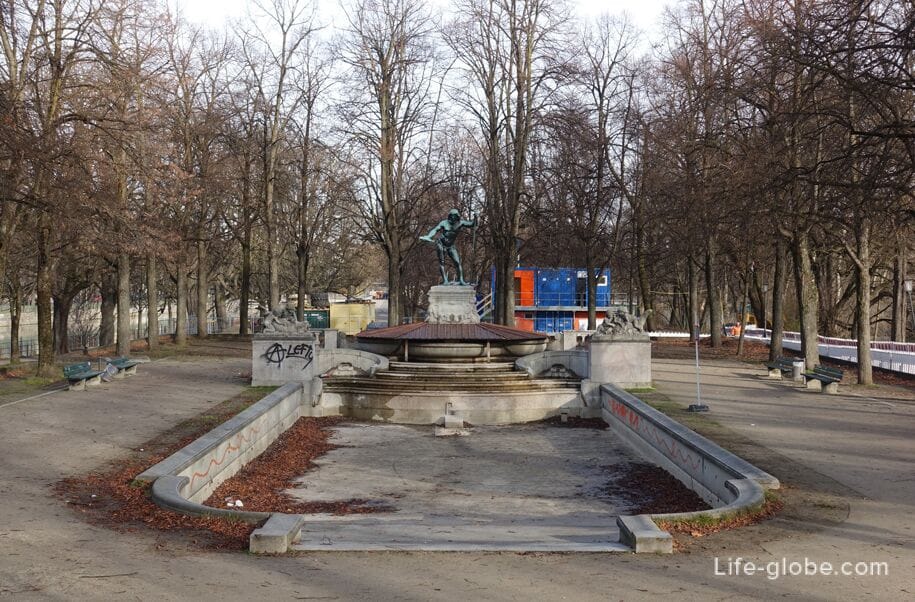
The bridges linking the Museum island
The Museum island are five bridges, one of which is a fully pedestrian bridge-dam.
Bridge Cornelius (Corneliusbrücke / Kornhausbrucke), located on the South side of the island, was designed by German architect Friedrich von Tarsem. Construction began in the summer of 1902.
Arched bridge was named in 1903 after the family of Cornelius: artist Peter von Cornelius (1783-1867), was his nephew, composer and poet Peter von Cornelius (1824-1874 gg.).
The bridge is designed for small cars, cyclists and pedestrians.
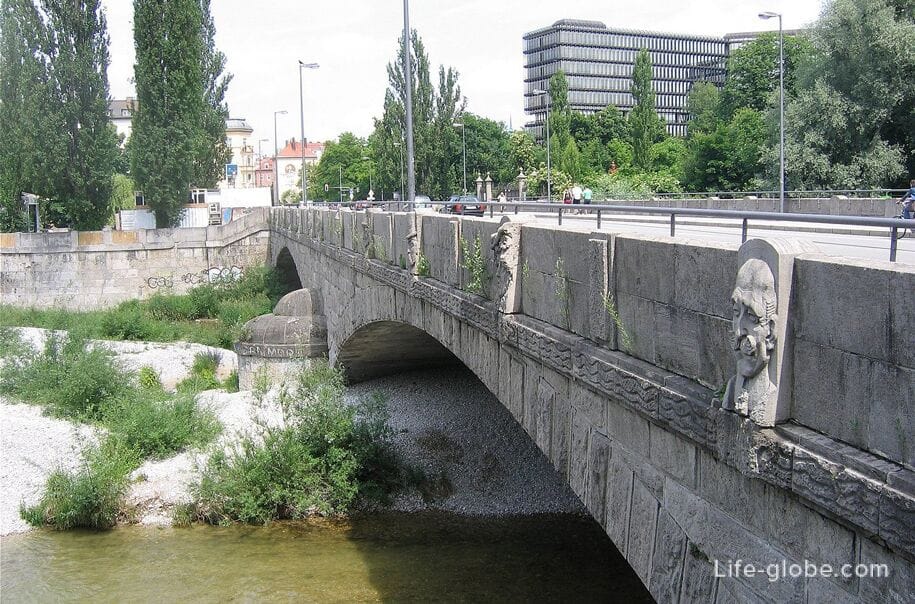
Axle Bosch (Boschbrücke / Bosebrucke) leads from the West Bank of the river ISAR (near Munich-Isarvorstadt) on Museum island (German Museum).
Concrete beam bridge was built in 1925 for the opening of the Deutsches Museum and named in honor of Johann Baptist Bosch (1873-1932) was the former head of the Munich office of civilian construction.
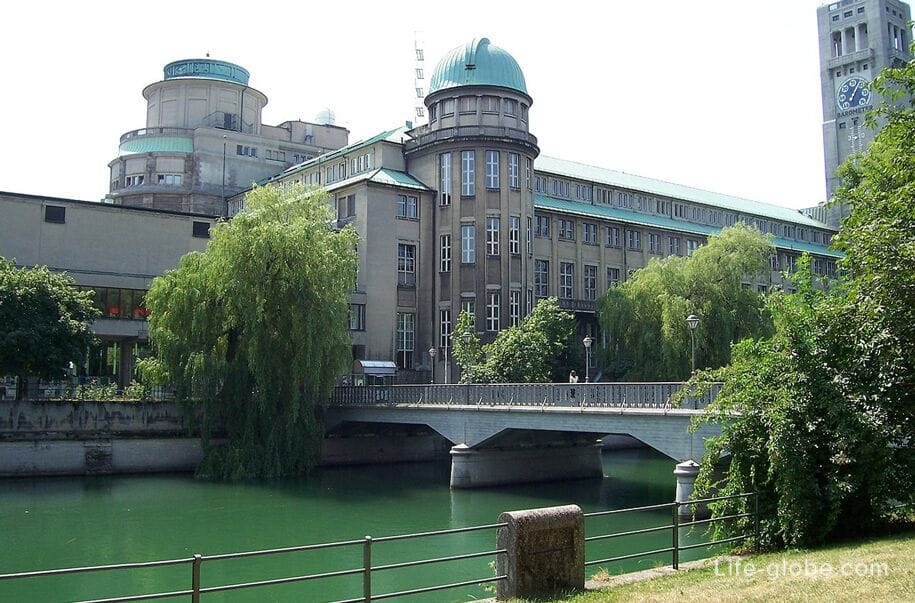
A view of the bridge Bosch and the German Museum on the Museum island (on the left)
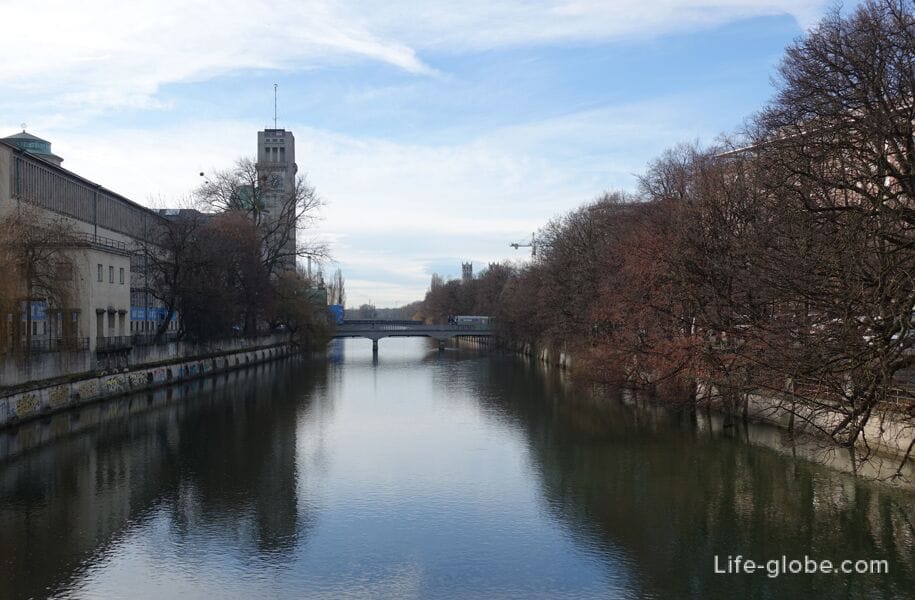
On the West Bank of the ISAR, near the bridge Bosch, is a statue of Bismarck (Bismarckstatue), made of red Sandstone and mounted on 11 September 1931.
Industrialist Paul Rauch wanted to donate the statue to a German Museum, but Oscar von Miller, known as the founder of the Deutsches Museum, rejected the installation of the statue on the Museum island, because he believed that Bismarck is only slightly promoted technology and science.
The statue depicts a man with a bare head, clad in armor and which stands as a guard. In the right hand of the statue is embedded a sword in his left hand presumably the scroll, as a symbol of many legal acts that were created during Bismarck.
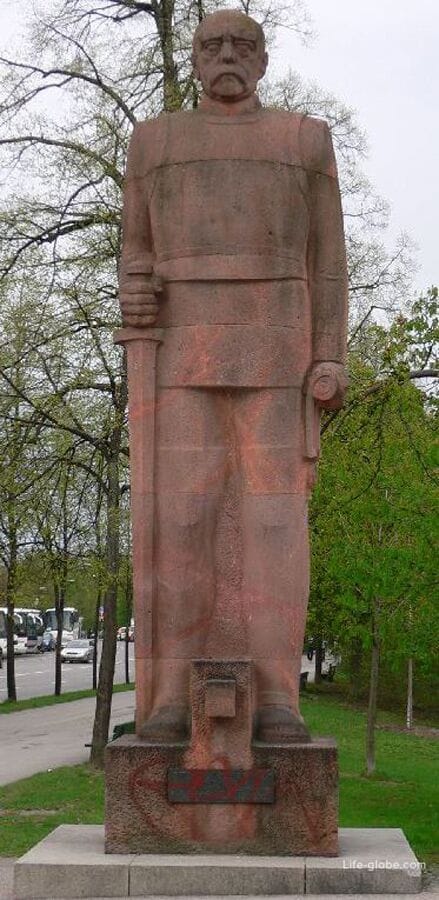
Bridge Zeneca (Zenneckbrücke / Tennenbronn) connects the Eastern shore of the river ISAR (near AU-Haidhausen) Museum island (German Museum).
This bridge is the sister bridge of BOSH. The bridge was constructed along with a bridge Bosch, only on the other side of Museum island, for the opening of the Deutsches Museum in 1924-1925 years.
The bridge is named after the German physicist and former Chairman of the Board of the German Museum - Jonathan Zeneca (1871-1959 gg.).
The design of the bridge interesting is the design of the railings, which were probably cast in 1925 in the Bavarian town of Bodenwöhr.
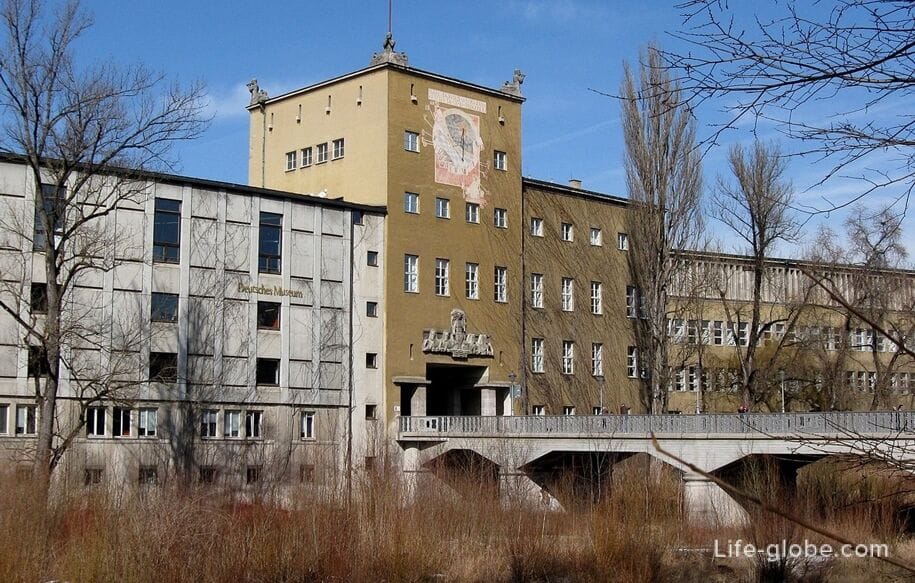
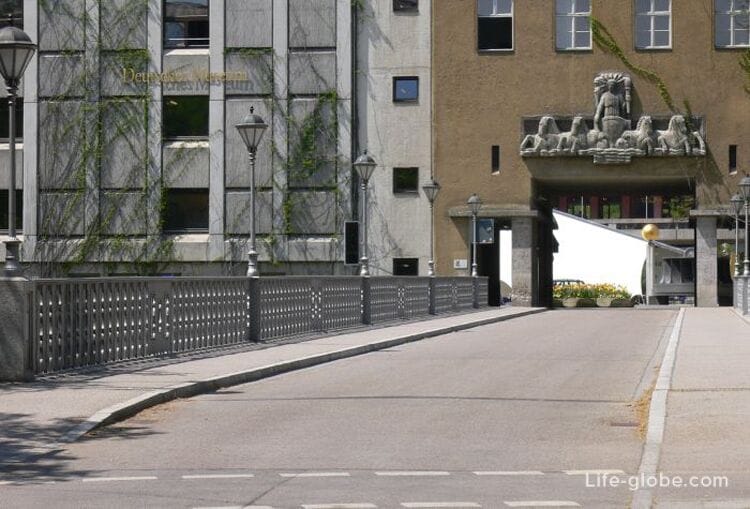
The Ludwig bridge (Ludwigsbrücke / Ludwigsbrucke) crosses the Museum island and is a dividing strip of the island into South and North parts.
Originally, the bridge was made of wood. He repeatedly burned, and he was also destroyed by the floods. Later the bridge was replaced by a stone arch.
The bridge we can see today dates from the 1934-1935 years of construction.
On the West side of the bridge there are three pylons with allegorical sculptures.
Ludwig is the bridge carriageways. Also on the bridge are two paths, one on each side of the bridge. Read more about the bridge by Ludwig...
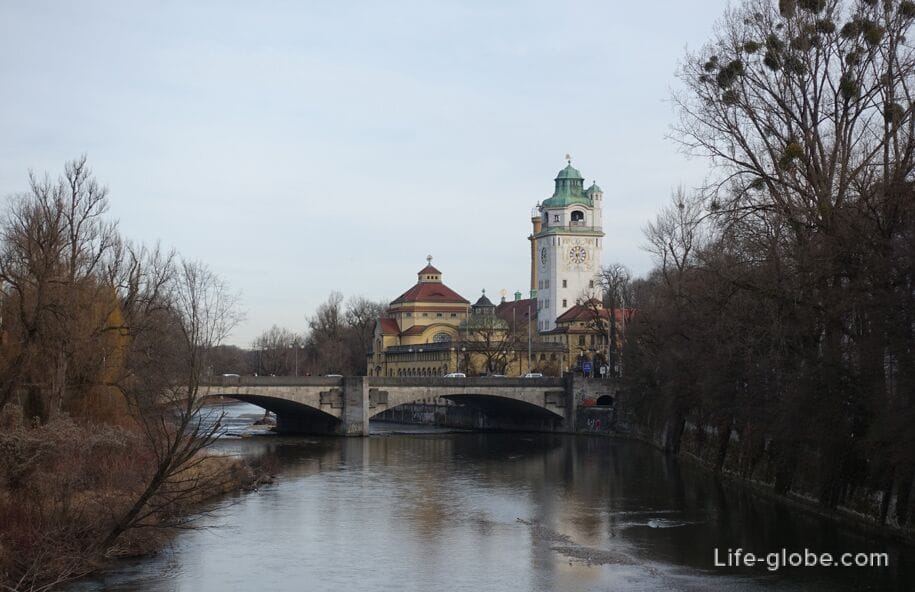
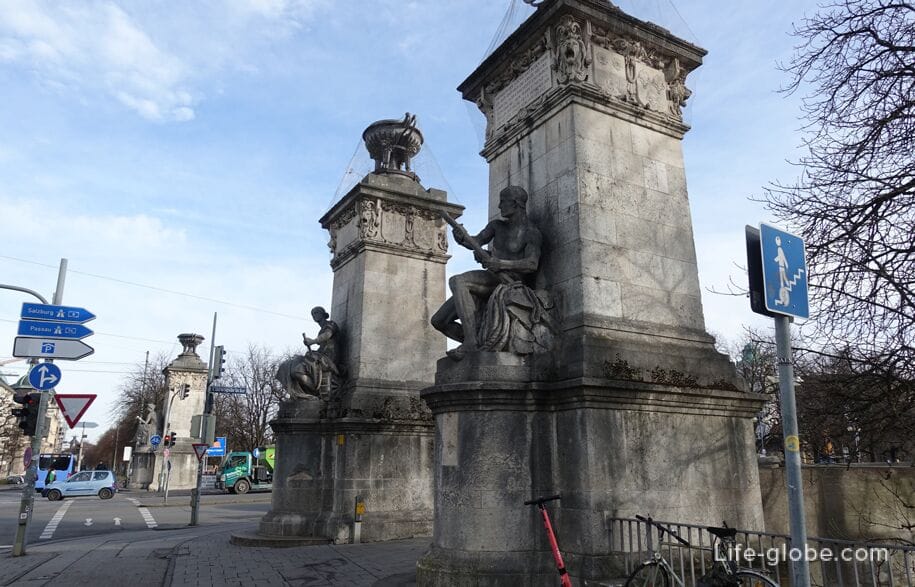
Bridge of Versteeg / Versteeg (Wehrsteg) - a pedestrian bridge that crosses over the dam on the river ISAR, which connects two of the island: Museum island (Northern tip) and the southern tip of the island of Prater.
Water is drained from a Large ISAR (West fork) in a Small ISAR (East fork) in ten drainage holes. The existing system was built in 1966.
The length of the bridge-dam is about 170 meters.

Where to stay near Museum island
On the island of placements means no, you can stay close to the Museum island.
The hotel features a garden, bar, Parking and free Wi-Fi.
The rooms are decorated in warm colours and feature a safe and satellite TV. Extras include a Minibar and a private bathroom with a Hairdryer, free toiletries and Slippers.
The room price includes Breakfast "buffet". Link to the hotel
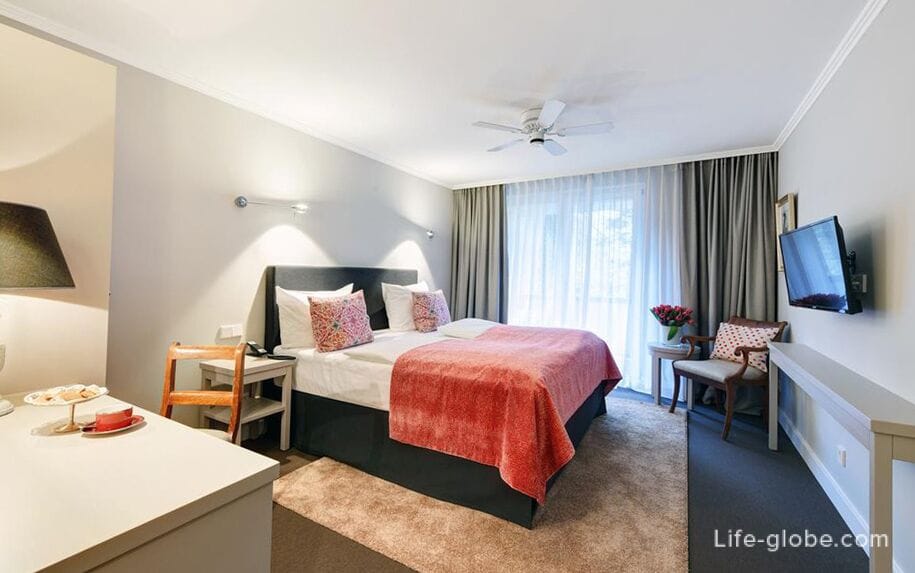
The 4-star Novotel München City offers Soundproofed rooms, a Spa centre with a swimming pool, business corner, games room for children, a restaurant, bar, Parking and Wi-Fi.
In the rooms, other amenities include: air conditioning and facilities for making hot drinks.
Room rates may include Breakfast. Link to the hotel
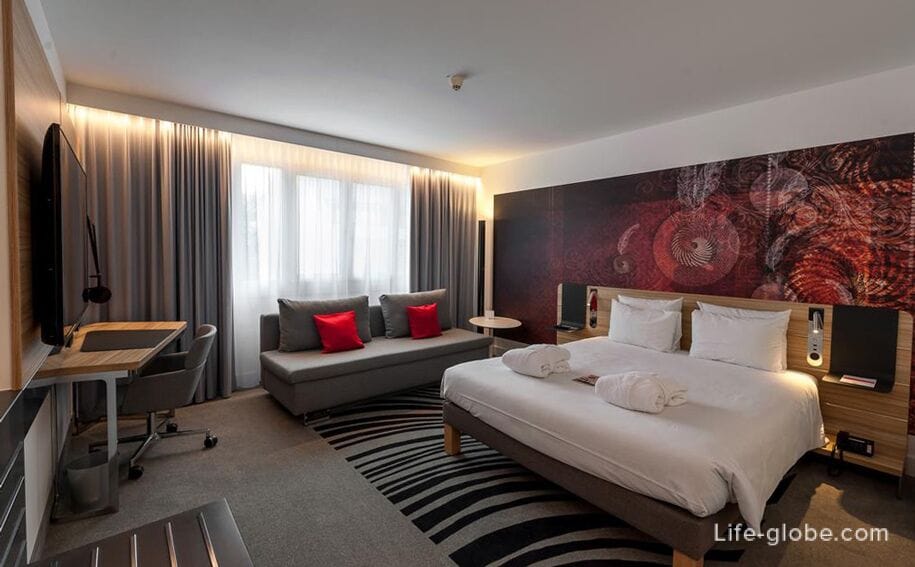
The 3-star hotel Platzl Marias tavern, rustic, bar, free Wi-Fi and free Parking.
The rooms offer views of the Mariahilf Church or the courtyard of the hotel.
Rooms offer a satellite TV and a private bathroom.
Room rates may include Breakfast. Link to the hotel

Apartment Beautiful House in the heart of Munich with free Wi-Fi.
In the apartment: parquet floors, fully equipped kitchen with a refrigerator and a dining area, a flat-screen satellite TV and a private bathroom with a bidet and a Hairdryer. Includes oven, hob, kettle and coffee machine. The link apartments
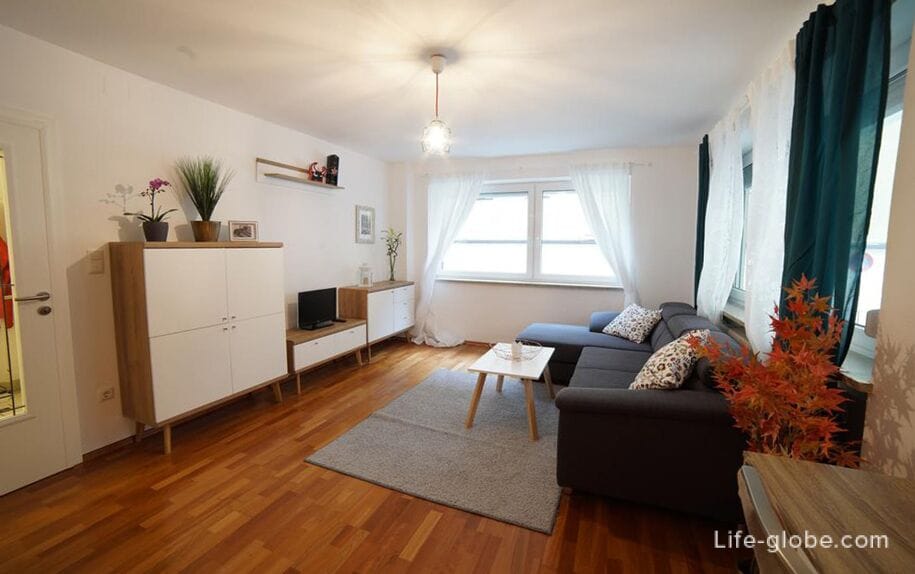
All accommodation in Munich, including close to Museum island and in the city centre, you can view and book here








